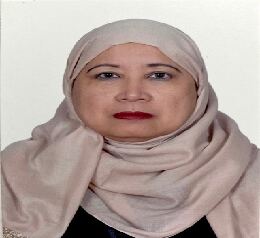9th Edition
World Heart Congress
THEME: "Heartbeat of Change: Inspiring Solutions for Global Cardiac Health"
 17-18 Nov 2025
17-18 Nov 2025  Dubai, UAE (Collaboration with the Armenian Cardiologists Association)
Dubai, UAE (Collaboration with the Armenian Cardiologists Association) THEME: "Heartbeat of Change: Inspiring Solutions for Global Cardiac Health"
 17-18 Nov 2025
17-18 Nov 2025  Dubai, UAE (Collaboration with the Armenian Cardiologists Association)
Dubai, UAE (Collaboration with the Armenian Cardiologists Association) 
King Faisal Specialist Hospital And Research Center, Saudi Arabia
Title: Scimitar Syndrome (SS) and Pulmonary Hypertension: A Retrospective Analysis of Incidence, Clinical Characteristics, Risk Factors and Outcomes
Hanaa Banjar is a Professor of Pediatrics at Alfaisal University in Riyadh, Saudi Arabia, a position she has held since 2013. She also serves as a Consultant in Pediatric Pulmonology and Director of the Pediatric Pulmonary Fellowship Program at King Faisal Specialist Hospital and Research Centre, Riyadh.She completed her pediatric residency at the University of Ottawa in Ontario, Canada, followed by a fellowship in pediatric pulmonology at McGill University in Montreal, Quebec.A recognized expert in pediatric pulmonary medicine,She specializes in cystic fibrosis, pulmonary hypertension, and non-CF bronchiectasis. She is the principal investigator of a national cystic fibrosis registry encompassing approximately 400 patients and has authored over 90 peer-reviewed articles in her field.
Background: Pulmonary hypertension (PH) is a recognized complication of Scimitar Syndrome (SS), but data on its risk factors and outcomes remain scarce.
Objective: This study aimed to evaluate the incidence, clinical characteristics, risk factors, and outcomes of PH in SS patients.
Methods: This is a retrospective cohort study of SS patients managed at a large tertiary center between June 2015 and June 2024. PH was defined as a mean pulmonary arterial pressure (MPAP) >20 mmHg based on cardiac catheterization findings.
Results: Of the 46 SS patients included, 78.3% had PH with incidence density of 11.5 cases per 100 person-years. Univariate analysis identified the infantile form of SS and associated cardiac comorbidities (e.g., atrial septal defect) as risk factors for PH. However, multivariate analysis revealed only the presence of cardiac comorbidities was significantly associated with PH (p = 0.007). Following corrective surgery, 72% of SS patients with PH experienced resolution of PH a trend towards association in patients who underwent rerouting surgery (p=0.17). The median time to resolution after corrective surgery was 8.9 years compared to 2.7 years for patients without surgery.
Conclusion: PH is highly frequent in SS patients, particularly in those with infantile type and congenital heart defects. These findings underscore the importance of management of cardiac comorbidities in SS to improve outcomes as the etiology of PH in SS is multi-factorial. Further prospective studies are warranted to expand on these findings.